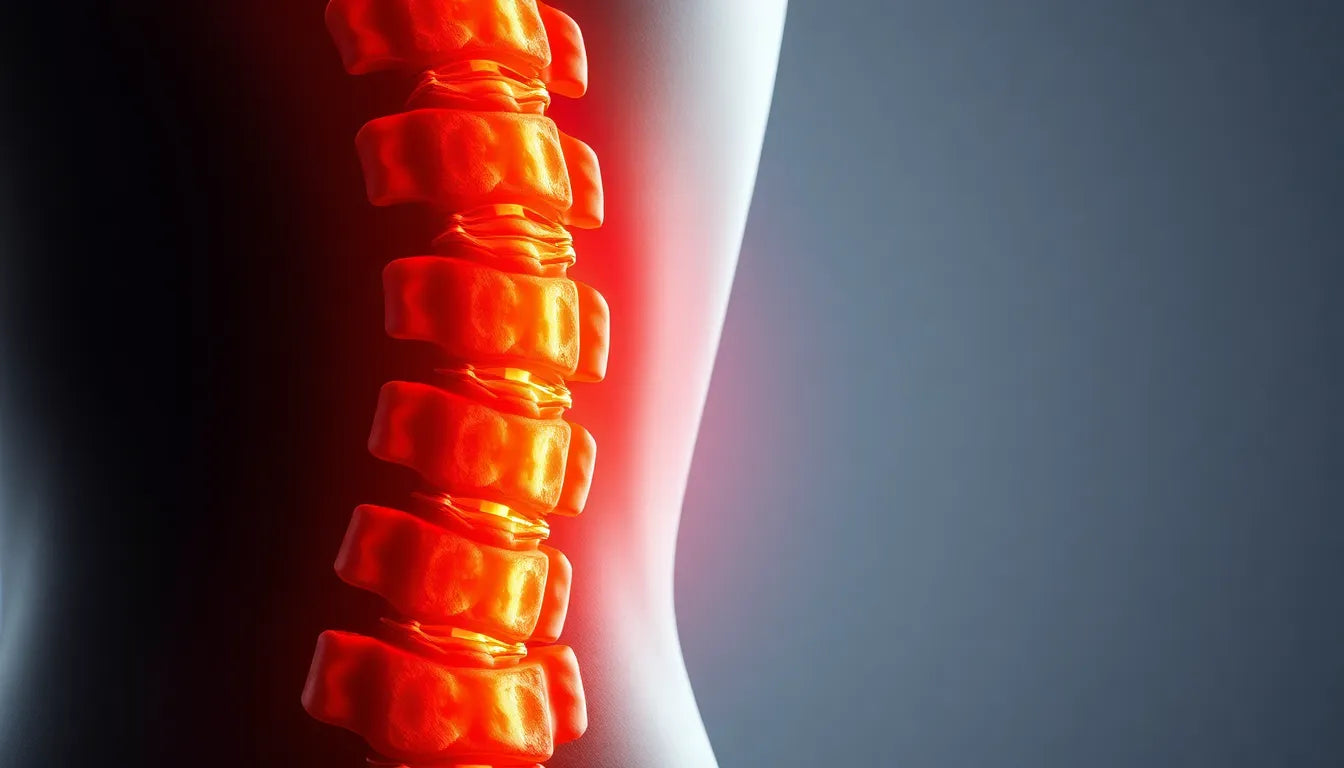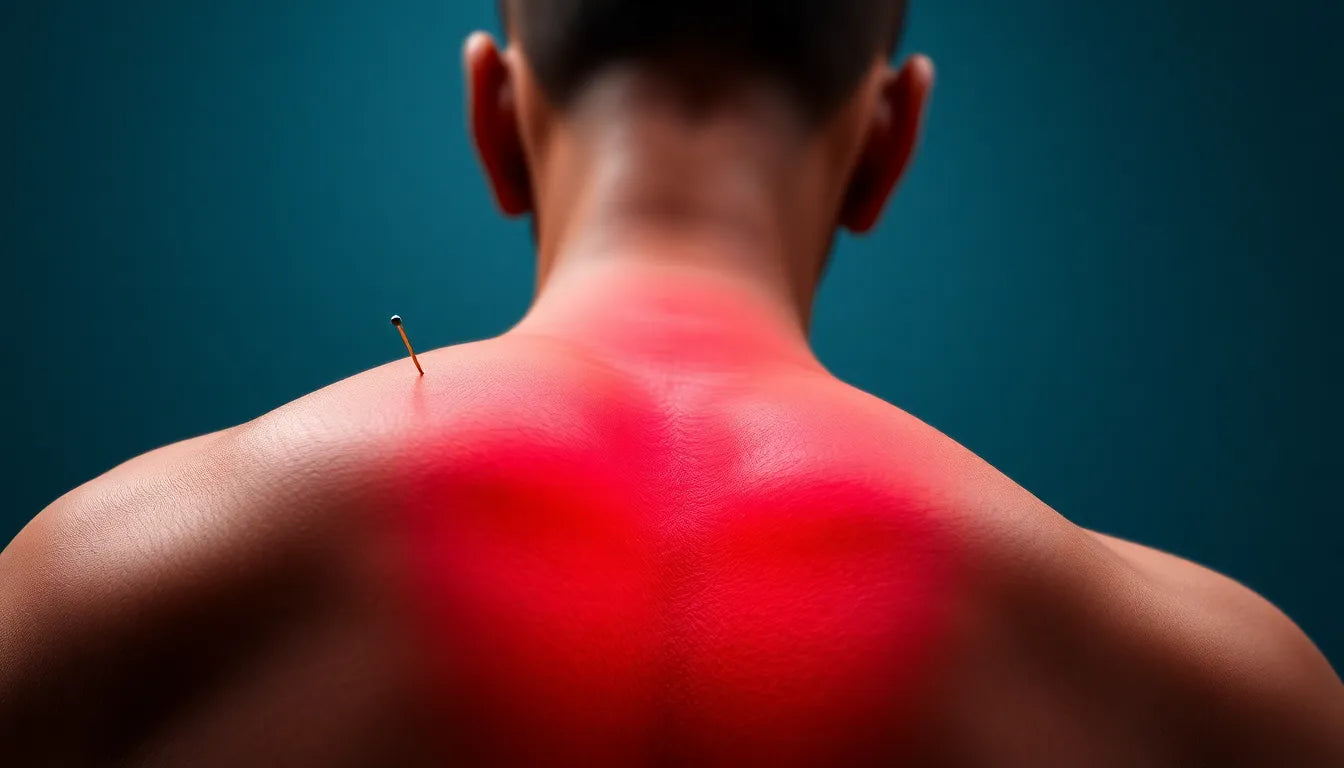Understanding the complexities of a herniated disc in the lower back is crucial for anyone experiencing persistent pain or discomfort in this region. A herniated disc, often referred to as a slipped or ruptured disc, occurs when the soft inner gel of a spinal disc pushes through a tear in the tougher exterior casing. This condition is particularly common in the lumbar region, which is the lower part of the spine. The lumbar discs bear much of the body's weight and are thus more susceptible to wear and tear or sudden injury.
causes and symptoms of a herniated disc
The development of a herniated disc in the lower back can be attributed to several factors. Age-related degeneration is a primary cause, as the discs lose hydration and flexibility over time, making them prone to tears and rupture. Sudden movements or heavy lifting with improper technique can also lead to a herniated disc. Common symptoms include sharp or radiating pain in the lower back, numbness or tingling in the legs, and muscle weakness. These symptoms arise because the herniated material can press against nearby nerves, causing significant discomfort and affecting mobility.
impact on daily life
A herniated disc in the lower back can significantly disrupt everyday activities, affecting everything from work performance to leisure pursuits. The pain and discomfort can make it challenging to sit for extended periods, lift objects, or even walk comfortably. This condition can also lead to emotional stress due to decreased physical capabilities and the potential for chronic pain if left untreated. Addressing a herniated disc promptly is essential to prevent further complications and to restore quality of life.
exploring solutions
Fortunately, there are various solutions available for managing and treating a herniated disc in the lower back. This blog post will delve into a comprehensive range of options, from conservative treatments like rest and physical therapy to more advanced interventions, including surgical procedures. The goal is to empower patients with knowledge and encourage informed decision-making regarding their health. Understanding the available treatments and their effectiveness can help individuals choose the best path forward to alleviate pain and regain functionality.
conservative care for herniated disc relief
When dealing with a herniated disc in the lower back, conservative care often serves as the first line of treatment. This approach focuses on minimizing pain and inflammation while promoting healing without the need for invasive procedures. One of the simplest methods is rest, which can be particularly effective in the acute phase of pain. However, it's crucial to balance rest with activity; prolonged bed rest can lead to muscle atrophy and stiffness, potentially worsening symptoms.
Medication is another cornerstone of conservative treatment. Nonsteroidal anti-inflammatory drugs (NSAIDs) like ibuprofen and naproxen are frequently recommended to manage pain and reduce inflammation. These medications can provide significant relief, allowing individuals to engage more comfortably in daily activities and physical therapy.
physical therapy and exercise
Physical therapy plays a pivotal role in the recovery process for those with a herniated disc. A structured program of exercises, guided by a trained therapist, can help strengthen the core and back muscles, enhancing stability and reducing pressure on the affected nerves. Typical exercises may include pelvic tilts, knee-to-chest stretches, and gentle aerobic activities like walking or swimming. These exercises not only alleviate pain but also improve flexibility and overall spinal health.
For those looking to incorporate a sample exercise regimen into their routine, consider the following:
| Exercise | Benefits |
|---|---|
| Pelvic Tilts | Strengthen abdominal muscles and support the lower back |
| Knee-to-Chest Stretch | Relieve tension in the lower back |
| Walking | Improve cardiovascular health and promote gentle movement |
lifestyle modifications and complementary therapies
Adapting daily activities to minimize strain on the lower back is essential for recovery. Ergonomic adjustments, such as using chairs with proper lumbar support and maintaining good posture, can significantly reduce discomfort. It's also advisable to avoid heavy lifting and prolonged sitting, both of which can exacerbate symptoms.
Complementary therapies offer additional avenues for relief and healing. Massage therapy can help alleviate muscle tension, while acupuncture may provide pain relief by stimulating specific points on the body. Cognitive behavioral therapy (CBT) can also be beneficial, helping individuals manage the psychological aspects of chronic pain and develop coping strategies.
interventional treatments for persistent pain
For patients whose pain persists despite conservative measures, interventional treatments may be considered. Epidural steroid injections are a common option, targeting inflammation around the nerve roots. These injections can provide temporary relief, often lasting several weeks, which can be crucial for enabling participation in physical therapy and other rehabilitative activities.
Selective nerve root blocks (SNRBs) offer another interventional approach. These injections are similar in purpose to epidural injections, providing targeted pain relief and helping to confirm the source of nerve irritation. While these treatments are not permanent solutions, they can be effective components of a comprehensive treatment plan, allowing individuals to regain function and quality of life.
In conclusion, managing a herniated disc in the lower back involves a multifaceted approach, beginning with conservative care and potentially progressing to interventional treatments if necessary. By understanding and implementing these strategies, individuals can take proactive steps toward recovery and pain relief.
surgical options for herniated disc relief
While many individuals with a herniated disc find relief through conservative measures, surgery may become necessary for those with persistent symptoms or worsening neurological issues. Surgery is typically considered when non-invasive treatments fail to alleviate pain or if there is significant nerve compression leading to symptoms like severe leg weakness or loss of bladder control.
Common surgical procedures include discectomy and laminotomy. A discectomy involves removing the herniated portion of the disc to relieve pressure on the nerves, often resulting in immediate pain relief. Laminotomy, on the other hand, involves removing a small portion of the bone over the nerve root to create space and reduce nerve compression. In some cases, artificial disc replacement may be considered, offering benefits such as preserving more natural movement compared to traditional fusion surgery.
alternative and holistic approaches
In addition to conventional medical treatments, alternative and holistic approaches can play a significant role in managing herniated disc pain and improving overall well-being. Practices such as yoga and pilates are particularly beneficial, as they focus on strengthening core muscles, enhancing flexibility, and promoting better posture. These activities can be tailored to accommodate individual needs and limitations, making them accessible to a wide range of patients.
Ergonomic products, such as supportive chairs and adjustable desks, can also help reduce strain on the lower back during daily activities. By integrating these holistic approaches into a comprehensive treatment plan, individuals can achieve a more balanced and sustainable recovery process.
frequently asked questions
Can I fix a herniated disc naturally?
Yes, many individuals can manage and even recover from a herniated disc naturally through conservative care. This includes rest, medication, physical therapy, and lifestyle adjustments. These methods aim to reduce inflammation, alleviate pain, and promote healing without surgery.
When do I need surgery for a herniated disc?
Surgery is generally considered when conservative treatments fail to provide relief or if there are significant neurological symptoms, such as severe leg weakness or loss of bladder control. A healthcare professional can help determine if surgery is necessary based on individual symptoms and overall health.
How long does recovery take?
Recovery time varies depending on the treatment approach and individual circumstances. Conservative care can lead to improvement within a few weeks to months, while surgical recovery may take several weeks. It's important to follow a healthcare provider's recommendations to ensure a safe and effective recovery.
What are the risks of not treating a herniated disc?
Ignoring a herniated disc can lead to chronic pain, persistent discomfort, and potential permanent nerve damage. This can significantly impact daily life and overall quality of life. Early intervention and appropriate treatment are crucial to prevent these complications.
Sources
- Sciatica.com. "11 Treatment Options for Herniated Discs."
- Cleveland Clinic. "Herniated Disk (Slipped or Bulging Disk)."
- OrthoInfo/AAOS. "Herniated Disk in the Lower Back."
- WebMD. "Herniated Disk Treatment, Remedies, and Medications."
- Spine-health. "Treatment for a Lumbar Herniated Disc."
- Cuellar Spine. "Herniated Disc Treatment Options in Palm Beach County."
- UMMS. "A Patient's Guide to Lumbar Herniated Disc."


















